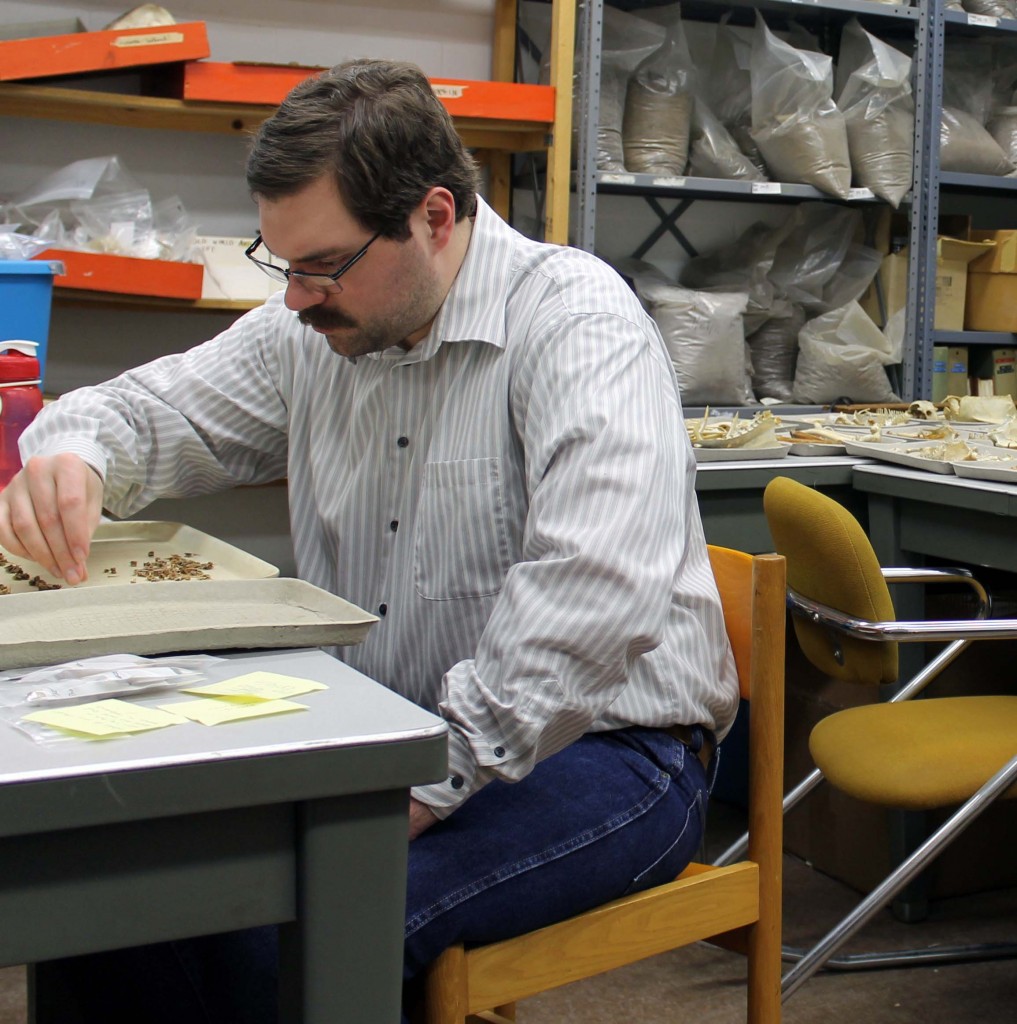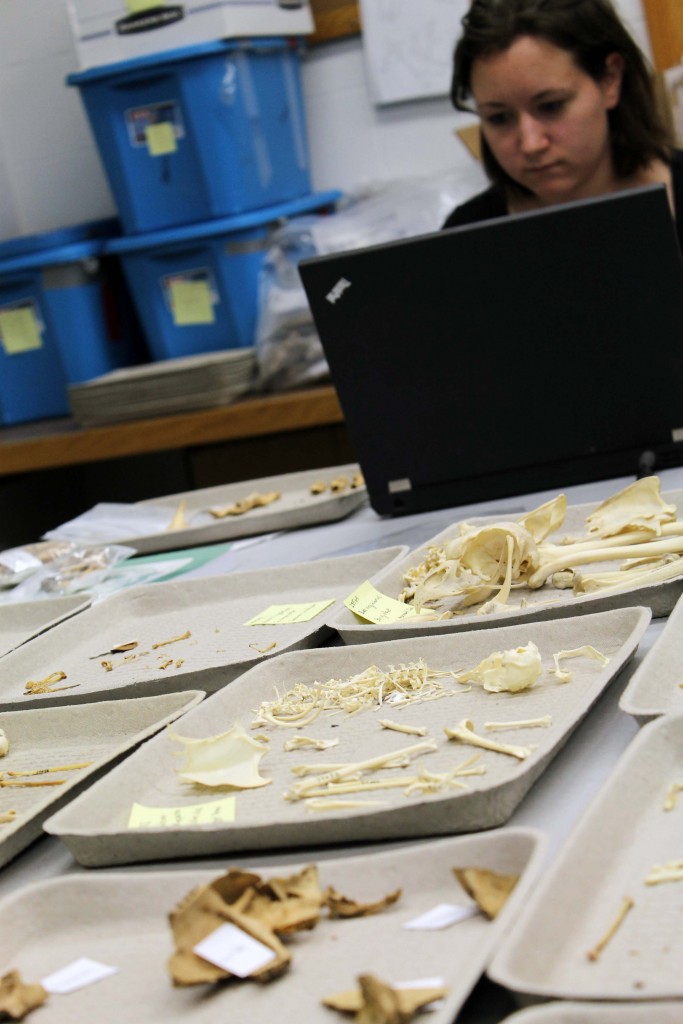Author: Cesar Najarro | Senior | University at Buffalo | Feb. 15, 2016
My name is Cesar Najarro and I am currently a senior at the University at Buffalo and have been working in the archeology lab with Dr. Funk for about two months now. The focus of our research revolves around a series of islands located just off the coast of Alaska called the Aleutian Islands. These islands were inhabited by a semi-nomadic people named the Aleuts (also know as the Unangan). These people lived off land and sea resources, particularly the marine fauna available to them at different times throughout the year. Their prehistoric sites throughout the islands include massive deposits of animal remains resulting from generations of hunting and eating and disposal habits. These remains allow us to understand several varying factors about the environment and the impact humans had on it.
My first assignment in the lab was to categorize and sort the material collected in 1/8th inch screen based on the characteristics of the various fragments in the samples. Among these fragments were fishbone, bird and mammal bones, charcoal and sea urchin skeletal parts. All of these remains result from Aleut activities and thus give insight as to how they shaped their environment. In particular the sea urchins were of great importance because of their sensitivity to any type of environmental change, thus making them excellent markers for different time periods, as the size of their remains change by noticeable amounts. Although sorting was not the most exciting task in particular, it did give me a new found appreciation for the patience and dedication archeologists must have in order to properly categorize their findings while simultaneously looking for patterns within the fossil record in order to make an outline as to how the environment changed and what possible factors influenced said change.
My second and as of now current task revolves around capturing and processing digital images of bone artifacts made by the Aleuts, such as fishhooks. This I find much more interesting because it caters to one of my own hobbies (photography) as well allowing me to further develop my skills with image processing software. Capturing the photos is straight forward, there is a small set up we have to do before hand in order to best capture the details of the artifact; factors such as light, angle and even movement of the camera must be accounted for in order to capture the best possible image of the artifact. Once this is done, I process the photo using GIMP (GNU manipulation software; https://www.gimp.org). I edit the images in order to refine and highlight certain aspects of the artifacts, such as carvings and breaks. This all serves to give insight into the culture of the Aleuts and convey the level of sophistication these people had in their ability to craft fine details into their tools, a trait that can be associated with a society with a strong culture and rich history.

